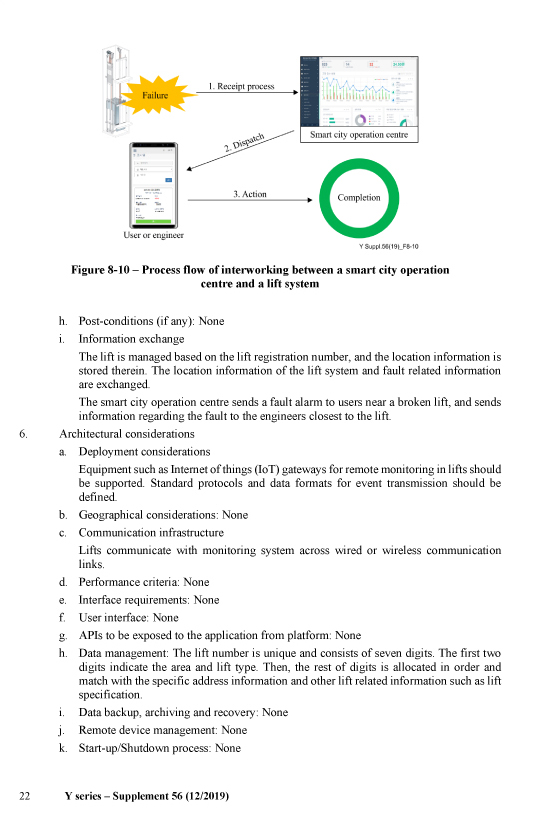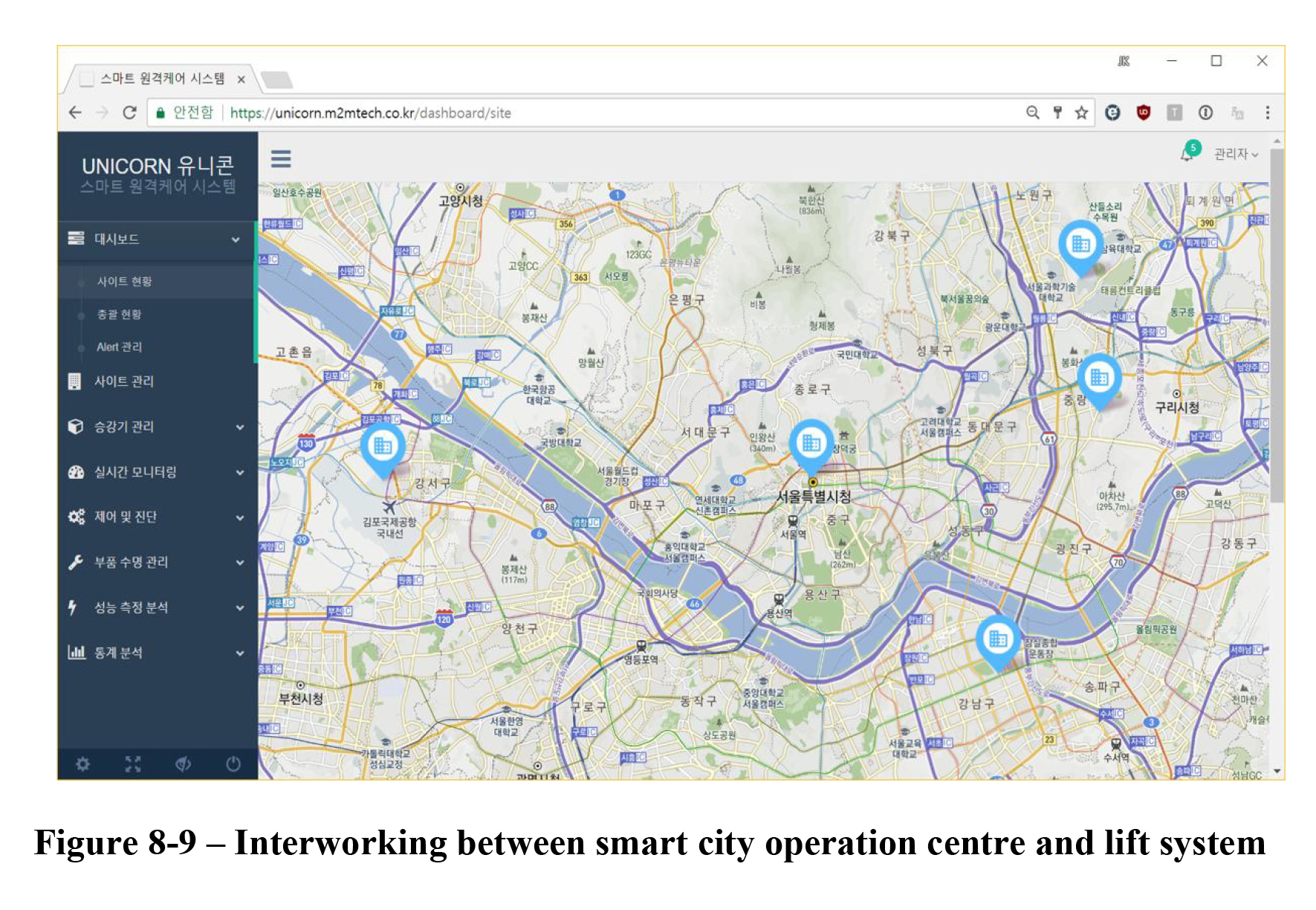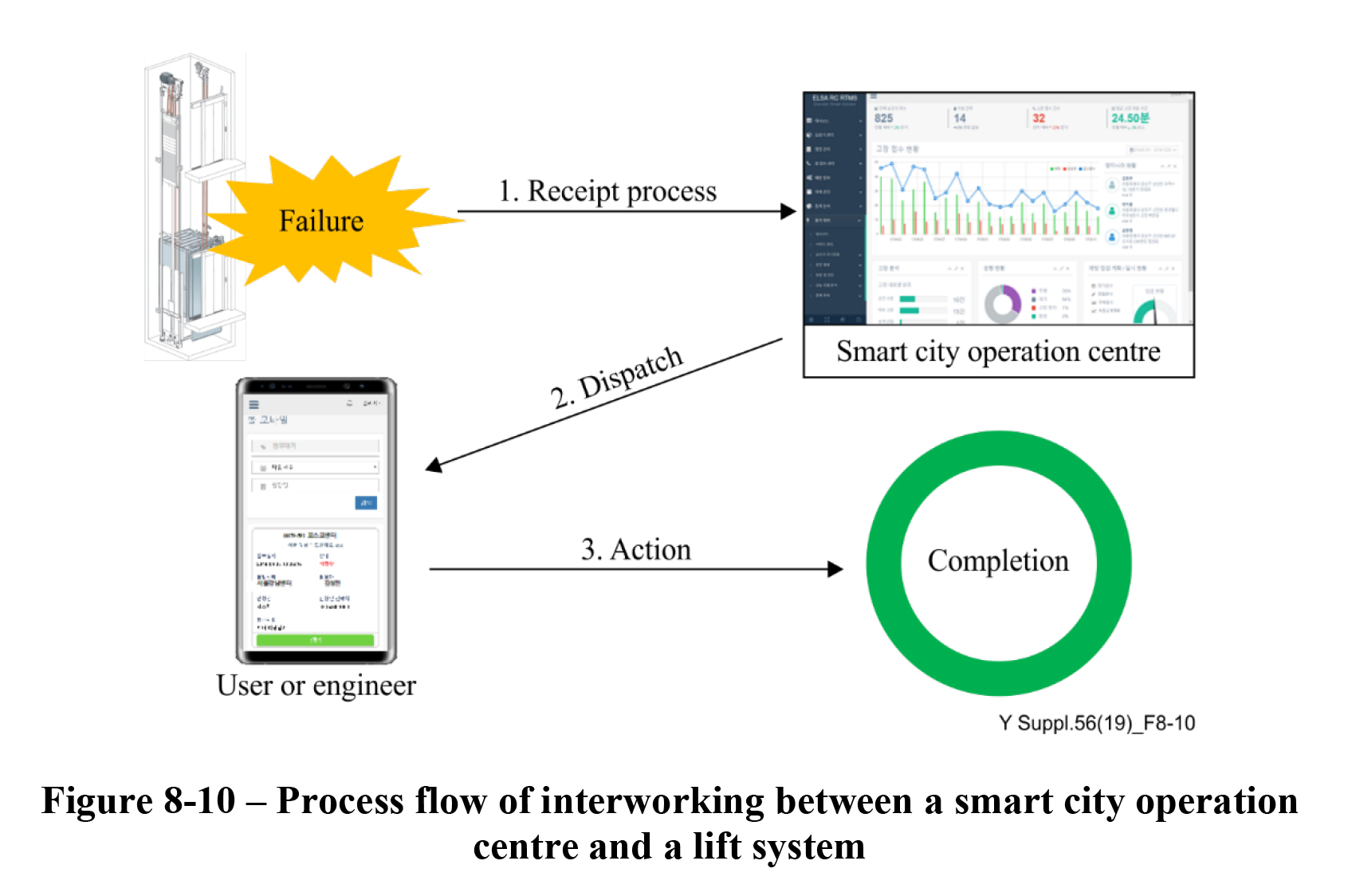
International standard
ITU-T SG20 Series Y
M2MTech , in cooperation with the Korea Electronics and Telecommunications Research Institute, is participating in the development of standards for the Internet of Things and Smart City technology in the International Standards Organization ITU-T SG20 (Internet of Things and Smart Cities). An international standard applied to the Internet of Things (IoT) for elevators and lift devices was proposed and adopted, and the approval process is underway. M2MTech 's efforts are expected to be helpful in researching the relationship between smart city and community (SC&C), and it is expected to contribute to planning the practical application of future smart city solutions that are becoming a hot topic not only in Korea but also worldwide.
ITU-T SG20 Series Y

The International Telecommunication Union (ITU) is the United Nations specialized agency in the field of telecommunications and information and communication technology (ICT). The ITU Telecommunication Standardization Sector (ITU-T) is a permanent body of the ITU, responsible for researching technical, operational and customs issues and issuing recommendations aimed at global telecommunication standardization.
M2MTech and Electronics and Telecommunications Research Institute (ETRI) are collaborating on the development of standards for ITU-T SG 20 as strategic cooperative partners in technology research in the Internet of Things and AI fields. M2MTech 's smart elevator solution with ETRI was contributed to the ITU-T Y-series (supplement 56) published in December 2019.
ITU-T SG20 contribution
“Framework of IoT based monitoring and management for Lift”
Due to most lifts not being able to connect directly to the telecommunication network, they have applied their own non-uniform data format and interconnection protocol of the telecommunication network. As a result of this, interoperability problems constantly arise, so M2MTech recognized the need to apply common protocols and data formats, and built a gateway and a web-serviced lift monitoring system to support interconnection.


8.5 Lift monitoring service
- 1. Title of the use case (title is strictly related to the application area addressed)a. Name of the use case: Lift monitoring services b. ID of the use case (IDs are given in ID category 2 (Infrastructure) of clause 7);c. Version/revision history (such as no./month/year): 1.0d. Source (Country/ITU-T member/Organization registered with ITU): Korea (Republic of)/ETRI
- 2. Objective of the use case (aligned with title that has an explanatory content) This use case describes maintenance and safety services for elevators in a smart city
- 3. Backgrounda. Current practice (current process/context which will benefit from the implementation of the use case) Currently, an administrator or an inspector performs lift safety inspection , danger is detected by the user's report, and emergency warning is activated.b. Need for use case
When managing lifts, it is possible to conduct safety and status check remotely by using a monitoring system. It is also possible to control when an individual is trapped in the elevator, or when a problem such as failure or stoppage occurs. Therefore, smart city operators manage smart city safely and conveniently using lift monitoring systems.c. Country ecosystem specifics: None - 4. City or community of the use casea. City or community name: Seoul metropolitan cityb. Country: Korea (Republic of) c. Region: Asia d. Population of the City: 10,124,579 (December 2017) e. Phase of the use case (Planning phase/Pilot phase/Commercial phase): Commercial phase
- 5. Descriptiona. Ecosystem description in terms of actors and business roles Smart city operation centre is connected with lift and management office. The smart city operation centre requests lift monitoring information from the lift administrator or management office and shares lift monitoring information.
NOTE – The main role of the smart city operation centre in this use case is to monitor and control the lifts throughout the city.b. Contextual illustration
For lift management and safety purposes, the smart city operation centre performs real-time monitoring, control, diagnosis, and management functions and provides statistical information.
Figure 8-9 – Interworking between smart city operation centre and lift systemc. Pre-requisites: None d. Pre-conditions (if any)
The applications used by users and engineers are different. Using the application which is made available in the users' devices, users provide location information updates to the smart city operation centre and receive nearby lift failure information. The smart city operation centre notifies the engineers located at the shortest distance from the failed lift.e. Triggers: When an emergency alarm, out of service (fault) or fire operation is reported.f. Scenario1) Interworking between smart city operation centre and lift system
− If an emergency alarm, out of service or fire operation event is detected in the elevator. An event is sent to the smart city operation centre.
− Smart city operation centre sends events to nearby users to prevent further accidents, or to engineers to repair faults.
− The engineers complete the inspection of the event, send a completion message to the smart city operation centre. The smart city operation centre receives messages from engineers, or receives complete events directly from the lift system.g. Process flow diagram
1) Interworking between a smart city operation centre and a lift system (see Figure 8-10)
Figure 8-10 – Process flow of interworking between a smart city operation centre and a lift systemh. Post-conditions (if any): None i. Information exchange
The lift is managed based on the lift registration number, and the location information is stored therein. The location information of the lift system and fault related information are exchanged.
The smart city operation centre sends a fault alarm to users near a broken lift, and sends information regarding the fault to the engineers closest to the lift. - 6. Architectural considerationsa. Deployment considerations
Equipment such as Internet of things (IoT) gateways for remote monitoring in lifts should be supported. Standard protocols and data formats for event transmission should be defined.b. Geographical considerations: None c. Communication infrastructure
Lifts communicate with monitoring system across wired or wireless communication links.d. Performance criteria: None e. Interface requirements: Nonef. User interface: None g. APIs to be exposed to the application from platform: None h. Data management: The lift number is unique and consists of seven digits. The first two digits indicate the area and lift type. Then, the rest of digits is allocated in order and match with the specific address information and other lift related information such as lift specification.i. Data backup, archiving and recovery: Nonej. Remote device management: Nonek. Start-up/Shutdown process: Nonel. Security requirements
The collected data must be stored and handled in a secure environment. - 7. Potential market growth forecast: None
- 8. Implementation constraints (for the support of the use case): None
- 9. Statutory compliances and related regulations: None
- 10. Available International Standards: None
- 11. References (related to standards or other useful information): https://unicorn.m2mtech.co.kr (Korean only)
- 12. General remarks: None
https://unicorn.m2mtech.co.kr is the initial version of ELSA.CLOUD, which is changed to https://elsa.cloud (Korean/English). Please visit https://m2mtech.co.kr/ElsaEn or send email to "info@m2mtech.co.kr" for more information.